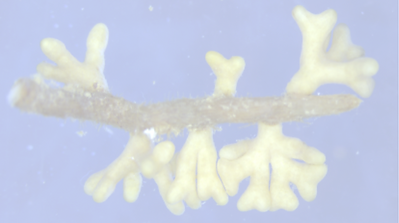
My research interests will focus on three parts:
(i) fungal community assembly modeling in various ecosystems,
(ii) fungal community and ecosystem functioning,
(iii) new tools in fungal ecology.


Sorghum Mycobiome
Sorghum (Sorghum bicolor) is a grass closely related to sugarcane (Saccharum) and corn (Zea mays). It is the fifth most important cereal crop globally; its use is increasing due to its ability to resist drought. We are studying the role that fungi play in sorghum’s drought resistance and initiated our studies with the obligately mutualistic mycorrhizal fungi found in sorghum roots, arbuscular mycorrhizal fungi (AM fungi). In the semiarid farmland in California, we used the simple, sorghum system with abundant sampling to discover that stochastic forces (drift and stochastic dispersal) act in leaves and roots early in host development and when sorghum is drought stressed, when mycobiomes are small (Gao et al Nat Commun, 2020, 11:34). With sorghum, we also investigated AM fungal communities from seedling emergence to grain maturation, finding that AM fungal succession is 40-fold stronger than seen even in the most recent studies (Gao et al. ISMEJ 2019, 13:214–226). By blending AM fungal data with sorghum transcriptome, we discovered a large-scale depletion in the expression of genes critical to AM symbiosis, with a corresponding drop in AM fungal biomass in the plant root (Varoquaux☯️, Cole☯️, Gao☯️, PNAS, 2019, 116: 27124–27132). Currently, we are blending fungal data with bacterial and sorghum data, aims to understand their coordinated responses.
Forest Mycobiome
From > 40 forests in China, we investigated root and soil fungi of > 2000 samples. From one of these forests, we had investigated soil and root-associated fungi, finding that (i) host plant diversity at the genus level was the best predictor of EM fungal diversity (Gao et al. Mol Ecol 2013, 22: 3403–3414), (ii) the driver of EM fungal community assembly changed from young forests to old forests (Gao et al. New Phytol 2015, 205: 771–785) and, (iii), the relationship between plant communities and soil fungal functional guilds differs between ridge and valley habitats (Gao et al. New Phytol 2017, 213: 1874–1885).